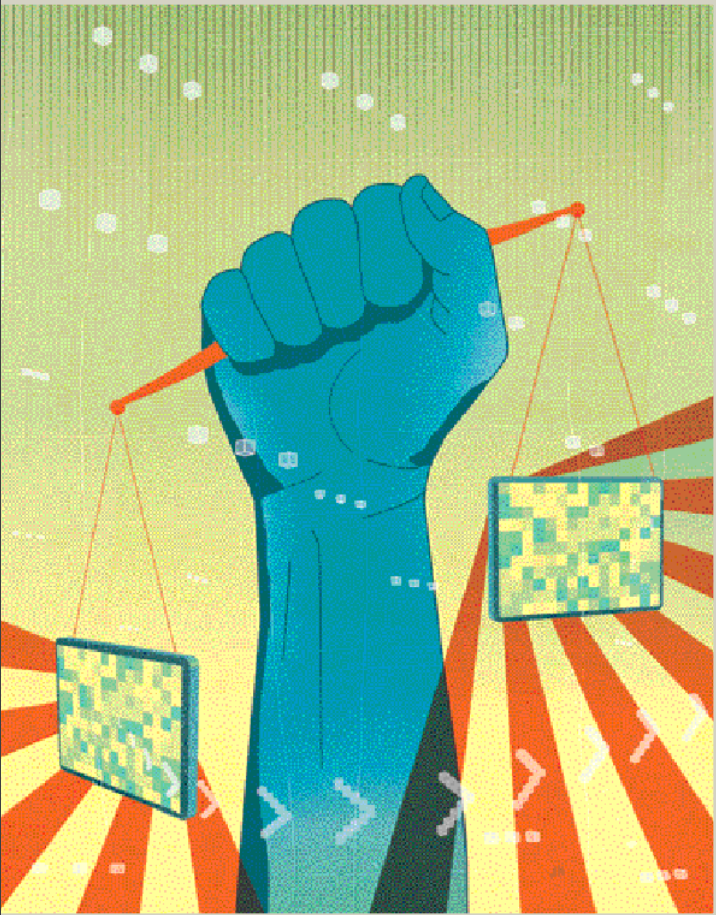This is Not a Game: Law and Orders in Virtual Worlds

When the framers crafted the laws of the land, they probably never imagined the land being an “island” within the Internet-based virtual world of Second Life. Or that its citizens would be computer-generated characters plunking down real cash to buy virtual mini-mansions.
This winter, a cadre of Stanford Law students—through their digital personas, or avatars—entered this video-game-like terrain as part of a new class, Legal Rules for the Metaverse. Their mission: to analyze the social, economic, and legal complexities of largely unregulated environments like Second Life where the lines between virtual and real are increasingly blurred.
How blurred? Second Life, launched by Linden Lab in 2003 as a three-dimensional, Internet-based virtual environment where users can set up cyber homes and businesses and interact with each other, has more than 13 million registered “residents.” And roughly 328,000 of these users are driving the equivalent of $1.3 million in transactions daily (the Second Life unit-oftrade is the Linden Dollar, which can be traded for real currency). From fashion designers selling avatar couture to publicists providing public relations support to fledgling companies, thousands of cyber-entrepreneurs have opened their doors for business.
This boom has occurred in a society that essentially has no legal system. While Second Life residents are bound by a terms-of-service agreement that governs such behavior as disturbing the peace, this contract does not apply to transactional relationships between third parties—a landlord and a tenant, for example—or to the intellectual property users create. The result: disputes and a lot of them.
“When I began the class, I had no idea about the scope and breadth of the virtual world scene,” says Greg Sobolski ’09 (BA/BS ’04). “Second Life is clearly not just a game at this point.”
Landlord-tenant disputes and squabbles over property sales are common, as are copyright and trademark infringement claims. In one case, six Second Life users brought suit in a real-world court against a user who allegedly knocked off their merchandise. The defendant ultimately paid $525 in damages. • One of the larger goals of the metaverse class is to think through how such quandaries might be resolved.
“Problems in virtual worlds might not be solved by a constitution or hearing cases or writing opinions,” says Lauren Gelman, executive director of the law school’s Center for Internet and Society, who developed and teaches the class. “The class works from the premise of what is the problem and what are the possible solutions rather than establishing a top-down judicial system and hoping people will buy in.”
To better grasp the problems facing people in virtual worlds, students build their own avatar and venture into Second Life. Gelman also invites guest experts. Last semester, students enjoyed an “in-world” conversation (held in Second Life) with an avatar from The Metaverse Republic, a nonprofit trying to create a justice system for Second Life, and received a real-life visit from former Second Life chief technology officer Cory Ondrejka. They also reflected in their journals on what it would mean to be a quasi-regulator in an online world.
To what extent virtual worlds will be regulated by the outside world remains to be seen. Lawsuits have cropped up— including one lodged by a Pennsylvania attorney who claimed Second Life illegally confiscated his virtual property (the case was settled out of court).
“When pioneers went West, it wasn’t clear what their legal relationship would be like with the people they left behind,” says Gelman. “In many ways the same is true for those forging new paths in the virtual world.”
“It’s a lot like the Internet in the early days,” says Henry Lien ’08, who predicts that virtual worlds will eventually be seen as the Internet is today and regulated accordingly.
“I have a sense that regulation is going to be a bottom-up experiment with different people trying out different regulatory regimes,” says Sobolski.
In that spirit of experimentation, Gelman plans to work with students in the coming year to apply the theories discussed in Metaverse to real disputes and other problems facing users in Second Life and other virtual worlds. “This is a unique opportunity to start from scratch,” she says.
